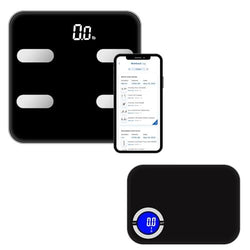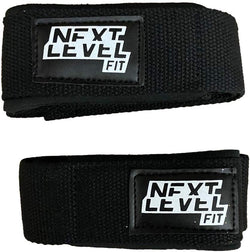Understanding How Body Fat Scales Work
When it comes to personal health and fitness, people often focus on the number they see on the weighing scale. Yet, that number alone does not reveal the full story. Two people may weigh the same but have very different levels of body fat, muscle mass, and overall health. This is where body fat scales come into play. These devices go beyond simple weight measurement and provide deeper insights into body composition, making them a popular choice for anyone who wants to understand their health better.
What Does Body Fat Percentage Mean?
Body fat percentage represents the proportion of fat compared to everything else in the body—muscles, bones, organs, and water. Unlike weight, which can fluctuate due to many factors, body fat percentage paints a clearer picture of overall health. A person with a healthy percentage is less likely to face issues like diabetes, heart disease, or stroke, while a higher percentage may increase the risks. For those setting fitness goals, this number becomes a guide to whether their efforts are leading to fat loss, muscle gain, or simply weight change.
How Do Body Fat Scales Measure Fat?
Body fat scales rely on a method called bioelectrical impedance analysis (BIA). When someone steps on the smart body scale, a safe and very low electrical signal travels through the body. Because fat, muscle, and water all conduct electricity differently, the scale can estimate body fat based on how quickly or slowly the signal moves. In just a few seconds, the user receives an estimate of not only body fat percentage but also details like water percentage, muscle mass, and sometimes even bone density.
Are Body Fat Scales Accurate?
This is one of the most common questions people ask. While body fat scales provide valuable information, their accuracy can vary. Factors such as hydration levels, time of day, or even recent exercise can influence readings. They are not as precise as medical tests like DEXA scans, but for home use, they are reliable enough to track progress over time. What makes them useful is not necessarily one single reading, but the trend they reveal when used consistently.
Pros and Cons of Using Body Fat Scales
Like any tool, body fat scales come with both advantages and limitations. Understanding these can help users make informed decisions about tracking their health.
Pros of Body Fat Scales
1. Ease of Use: One of the main advantages of body fat scales is how simple they are to use. Stepping onto the scale provides instant feedback, making them accessible for anyone, whether a first-time user or someone experienced with fitness tracking.
2. Quick Feedback: Body fat scales provide immediate insights into body composition, allowing users to track changes over time. This instant feedback can be motivating, helping individuals stay on course with their fitness or weight management goals.
3. Cost-Effective: Compared to medical tests like DEXA scans or hydrostatic weighing, body fat scales are relatively affordable. This makes them a convenient and budget-friendly option for monitoring health at home without the need for professional equipment.
Cons of Body Fat Scales
1. Accuracy Issues: While useful for tracking trends, these scales are not always perfectly accurate. Factors such as hydration, time of day, or recent activity can influence readings, leading to estimates rather than precise measurements.
2. Lack of Specificity: Body fat scales provide an overall body fat percentage, but they cannot pinpoint where fat is distributed in the body. Understanding fat distribution can be important, especially for assessing certain health risks.
3. Dependency on Consistency: To get meaningful insights, users need to measure under consistent conditions. Inconsistent usage—different times of day or varying hydration levels—can make results misleading or confusing.
Body Composition Beyond Fat
One of the reasons people appreciate body fat measurement devices is their ability to give more than just a fat percentage. Many smart scales now include metrics such as muscle mass, water percentage, and bone density. These insights are helpful for athletes who want to monitor muscle growth, individuals aiming for balanced hydration, and older adults concerned with bone health. Together, these numbers offer a fuller view of body composition.
Difference Between BMI and Body Fat Percentage
BMI, or Body Mass Index, is a simple calculation using height and weight. It can categorize individuals as underweight, normal, overweight, or obese. However, BMI does not take into account whether the weight comes from fat or muscle. A bodybuilder may have a high BMI but low body fat percentage, while someone with average weight may carry higher fat levels. This difference is why body fat percentage is considered a more accurate indicator of health than BMI alone.
Why Body Fat Measurement Matters for Health
Understanding body fat is not only about appearance but about long-term health. A higher body fat percentage increases the likelihood of conditions such as heart disease, type 2 diabetes, and stroke. On the other hand, tracking fat loss while pursuing fitness goals provides reassurance that efforts are moving in the right direction. For many people, seeing progress in body composition is far more motivating than watching weight alone.
Alternatives to Body Fat Scales
For those who want even more precise measurements, there are alternatives. DEXA scans, hydrostatic weighing, and skinfold calipers are commonly used methods. These approaches often provide highly accurate results but are typically performed in medical or professional settings. Compared to these, body fat scales offer the convenience of quick, at-home monitoring, which is why they remain so popular.
Getting the Most Reliable Results
To ensure consistent and accurate readings from a smart body scale, it is important to use it correctly. Measuring at the same time each day, preferably in the morning before eating or drinking, can reduce fluctuations. Hydration levels should also be considered, as they affect BIA signals. Over time, by following a routine, the numbers become more meaningful and show true progress.
Final Thoughts on Body Fat Scales
Body fat scales bridge the gap between simple weight tracking and in-depth body analysis. While they may not replace professional medical tests, they empower individuals to understand their body composition, set fitness goals more effectively, and stay aware of potential health risks. By focusing on more than just the number on the scale, users gain a deeper connection with their health journey—one that goes beyond weight to reveal what truly matters inside the body.








